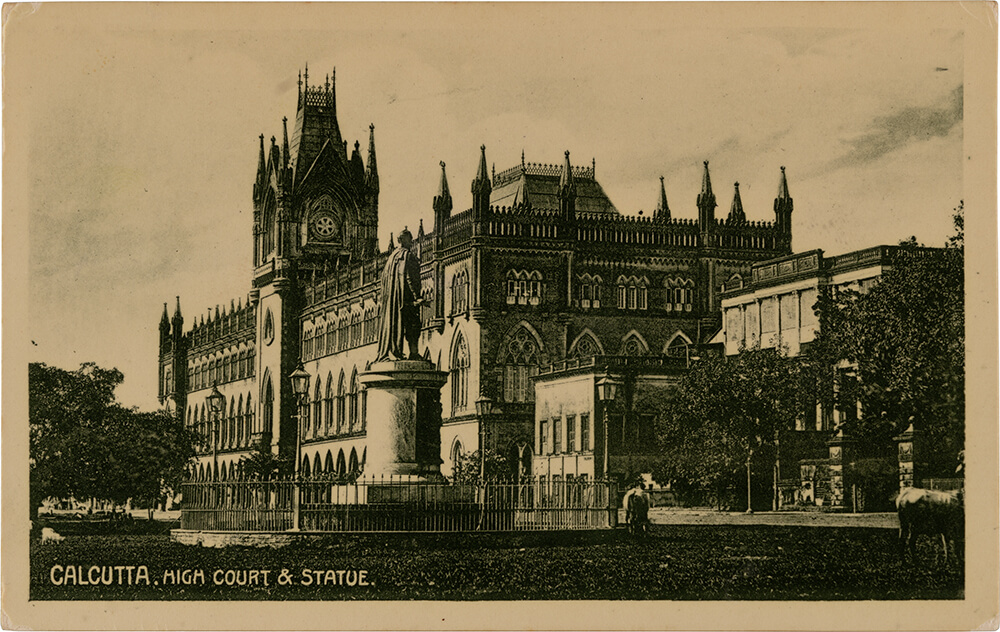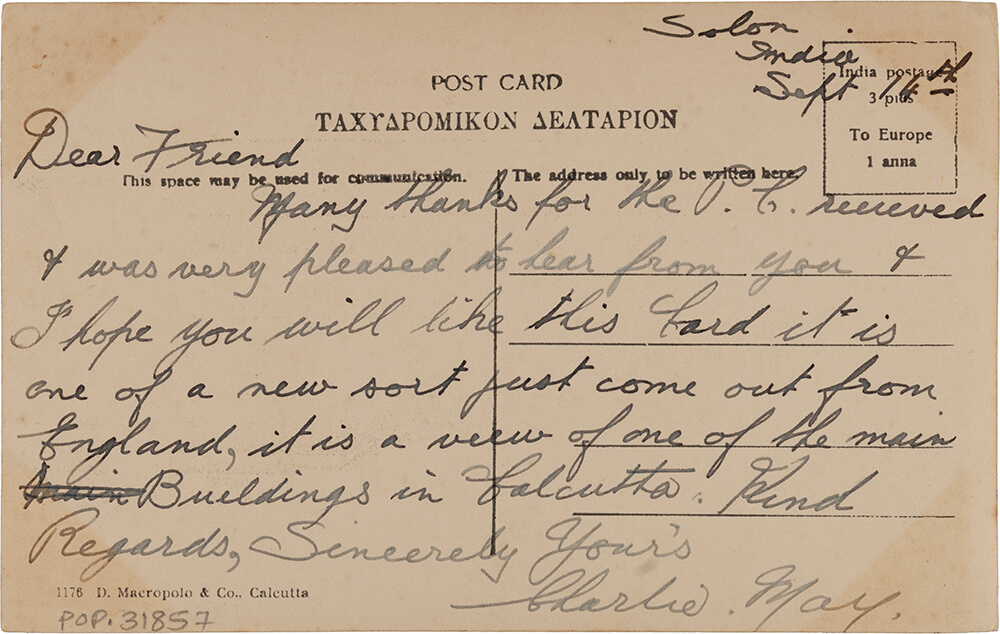Early Photography in India
Early photography played a crucial role in shaping the visual history of India. The medium was introduced in the 19th century by British and European photographers, many of whom were either travelling to, or stationed in India in service of the British Empire expansion. Developing on Daguerreotype, prominent photographers like Samuel Bourne and Lala Deen Dayal & Sons, contributed to the rise of commercial photography, with their images becoming prominent features on postcards.
Picturesque Postcards
In the interest of documentation, the British drew inspiration from everything they encountered across India, which is evident in the photographs and images that became popular in postcards. Picture postcards commonly featured the working population, ritualistic practices, and architecture that showcased both Victorian-style buildings and Indian influences. Such depictions were sent to the West, effectively flaunting life in the colony, and emphasising the English impact on shaping city landscapes.
Blending Perspectives
Gobindram Oodeyram, the makers of this postcard, were a father-and-son team leading one of the best photographic firms in Jaipur. They shared close connections with the royal family, and flourished in a city without major European-run studios. They produced postcards covering everything from maharajas, to traditional artisans to the unexpected, such as this particular one, which shows a little boy drinking milk from a goat's udders. For a European buyer, it may have suggested local primitiveness, while for an Indian, it could be seen as drawing parallels with baby Krishna being sustained by milk. How does this postcard challenge your views on cultural representation?
Patrons of Indian Photography, early 20th century
The Parsi population was among the most affluent of Indians in colonial society, known for their patronage of photography. At the time, most other communities hesitated to have their photographs taken, but Parsis embraced the medium as a means to document their life. They played a key role in establishing printing presses across India, initially focusing on creating awareness for Parsi women and later expanding to include the general population.
Would you like to know more about photography studios in Bangalore and other parts of India? Explore this conversation by Emily Stevenson and Stephen Hughes
© Museum of Art & Photography (MAP), Bengaluru, 2024 | All Rights Reserved













